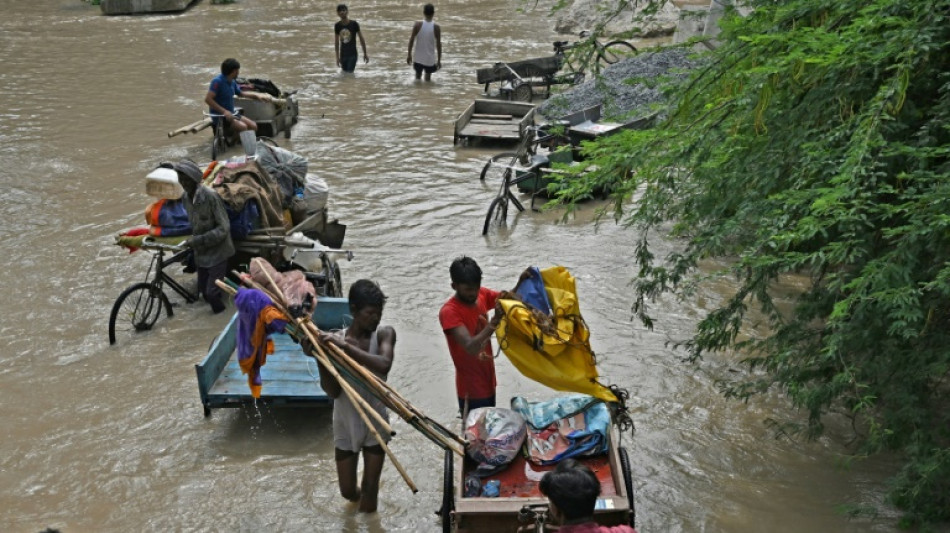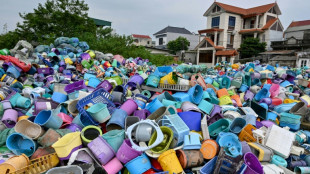

Death toll rises to 66 in India's monsoon mayhem
Days of relentless monsoon rains have killed at least 66 people in India, government officials said Wednesday, with dozens of foreign tourists stranded in the Himalayas after floods severed road connections.
Flooding and landslides are common and cause widespread devastation during India's treacherous monsoon season, but experts say climate change is increasing their frequency and severity.
Torrential downpours have washed away vehicles, demolished buildings and torn down bridges in Himachal Pradesh, the worst-affected state.
At least 33 people have lost their lives in the state -- popular for its picturesque Himalayan hill stations -- since Saturday, said Onkar Sharma, head of the state disaster agency.
Rescue teams were mobilised to assist 40 foreign travellers -- including 14 Russians and 12 Malaysians -- stranded at tourist destinations alongside several hundred Indian nationals, state police chief Satwant Atwal told AFP.
"Due to heavy snowfall and bad weather it has become very difficult to evacuate them," Chief Minister Sukhvinder Singh Sukhu said Wednesday on Twitter.
"We are exploring all possible options."
At least 12 people were killed in neighbouring Uttarakhand state, including nine on Tuesday when debris fell on their vehicles on a national highway, officials said.
A popular pilgrimage to the state's Kedarnath temple, home to a revered shrine of the Hindu deity Shiva, was suspended due to heavy rains.
- 'Huge loss of life' -
"In view of continuous rains in all the areas of the state, I request the people and pilgrims to avoid making unnecessary journeys," Uttarakhand Chief Minister Pushkar Singh Dhami wrote on Twitter.
Incessant rain had caused significant damage across Punjab state, with at least 10 killed in flash floods.
"There is a huge loss of life and property, the loss is being assessed," state revenue minister Brahm Shankar Jimpa told reporters Tuesday.
At least 11 people were killed in Uttar Pradesh, India's most populous state, according to state officials.
The capital New Delhi has also been put on high alert for flooding after the Yamuna river, which snakes past the megacity, recorded its highest levels since 1978.
The waterway has already inundated homes along its banks and Chief Minister Arvind Kejriwal said it was expected to rise further later on Wednesday evening.
The monsoon brings South Asia around 80 percent of its annual rainfall and is vital both for agriculture and the livelihoods of millions of farmers.
But it brings destruction every year in the form of landslides and floods. Melting glaciers add to the volume of water while unregulated construction in flood-prone areas exacerbates the damage.
The rainfall is hard to forecast and varies considerably, but scientists say climate change is making the monsoon stronger and more erratic.
U.Sparacello--IM



